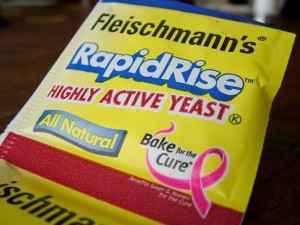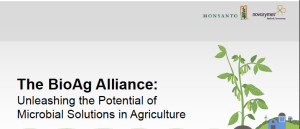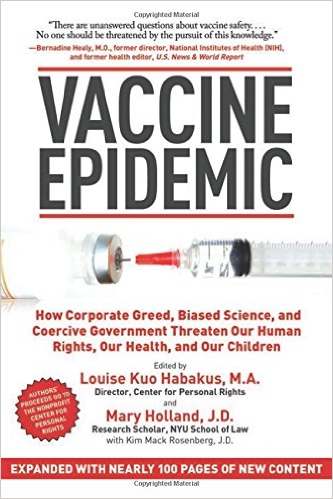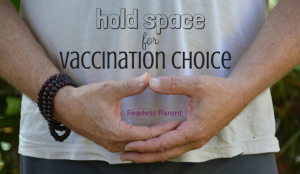The current contentious GMO debate focuses on the health impacts of foods that have been genetically engineered on purpose for taste/texture, resistance to pests/disease, and other qualities.
It appears, however, that the food supply may already be contaminated by accident with genetically modified microorganisms designed for other purposes. And these “inadvertent” GMOs are associated with a host of metabolic diseases that directly tie to widespread health woes, including obesity, type 2 diabetes, and inflammatory gut and immune/autoimmune problems.
Non-food commercial uses of GM baker’s yeast
 Genetically modified Baker’s yeast, also known by its scientific name Saccharomyces cerevisiae, is used in numerous commercial applications (and this New York Times article suggests that many new developments in the flavor and fragrance arena are underway). Drug companies use GM Baker’s yeast to make the peptide hormone insulin and other drugs.
Genetically modified Baker’s yeast, also known by its scientific name Saccharomyces cerevisiae, is used in numerous commercial applications (and this New York Times article suggests that many new developments in the flavor and fragrance arena are underway). Drug companies use GM Baker’s yeast to make the peptide hormone insulin and other drugs.
For decades, human insulin for diabetic medication has been produced in genetically modified Baker’s yeast by Novo Nordisk, a GMO pharmaceutical company which is a sister company to Novozymes, a producer of genetically engineered food enzymes.
Accidental environmental release
 Despite efforts to avoid environmental release of GMO yeast, Novo Nordisk has reported accidental spills over the years. Further, air emissions from the fermentation and recovery plants also contain GMOs, according to the company.
Despite efforts to avoid environmental release of GMO yeast, Novo Nordisk has reported accidental spills over the years. Further, air emissions from the fermentation and recovery plants also contain GMOs, according to the company.
“The discharge to the air is below the limit value of 100,000 GMOs/m3 air as specified in the gene technology approvals… GMOs are also discharged into the waste water. The discharge is below the limit value of 10,000 GMOs/ml waste water as specified in the gene technology approvals.”
What happens if/when these GE yeast enter the environment? Novo Nordisk, which performs its own environmental disaster management and assessment, says its experience is that there is nothing to worry about:
“Very few accidental releases have actually occurred. We conduct investigations for GMOs in the environment around the factories on a regular basis, and we have never found any GMOs. Based on many years of experience it is our assessment that our genetically modified cells do not survive in nature. The cells are very weak and not fit to survive in the environment with scarce nutrients and competition from naturally occurring microorganisms.” (Molecular microbiologist Niels Bagge, PhD employed by Novo Nordisk)
It gives new meaning to Novozymes’s tagline: Rethink Tomorrow.
Oversight and regulation
Of course, since there is no third party verification, one cannot be certain if these GE yeast cells and their spores have not become established in the environment or the food chain.
Why are drug companies using Baker’s yeast for GE pharmaceutical product manufacturing?
It’s because the genetics of Baker’s yeast have been worked out by geneticists, and its genome is easy to manipulate, adding new genes with ease. Just ferment the yeast, and it synthesizes whatever you designed it to produce.
More specifically then, why are corporations permitted to use Baker’s yeast for non-food commercial purposes when it is precisely the same yeast used in our food supply?
It’s because no one said they couldn’t.
GE yeast in human intestines for medical science?
 What could happen if the GE Baker’s yeast that produces insulin gets into the intestines of humans and starts producing insulin in the gut?
What could happen if the GE Baker’s yeast that produces insulin gets into the intestines of humans and starts producing insulin in the gut?
It could cause hyperinsulinemia, as excessive amounts of insulin are absorbed. The symptoms of hyperinsulinemia, by the way, include obesity and type 2 diabetes, as the excessive insulin causes cells to produce fat and absorb water.
Could this be a cause of the worldwide epidemic of obesity and type 2 diabetes? How much genetically modified yeast is needed in the intestines to cause a problem? The research into these questions is not being done.
When Novo Nordisk is finished using its yeast to ferment human insulin, the yeast is heat inactivated and fed to pigs. It is not mentioned in their procedure whether they test for yeast spores, which are heat stable. The pigs are noted to get fat on the slurry, which would happen with hyperinsulinemia.
The fact that GE yeast can enter the intestines and produce physiological effects is being exploited by medical science. GE yeast is already under study as a way to deliver drugs and vaccines when taken orally. The yeast gets through the stomach and into the intestines where it can impact the body by releasing the products it was modified to produce. See, for example:
- Vaccines based on whole recombinant Saccharomyces cerevisiae cells (FEMS Yeast Res.2010 Dec;10(8):1060-9)
The current concern about inflammatory consequences of gluten-containing food consumption may actually be related to GE yeast contamination of these foods. Gluten exposure in sensitive individuals causes brain fatigue, neurological problems, joint aches, headaches, mood swings, and digestive problems, all of which can be explained by hypoglycemia (low blood sugar) resulting from having too much insulin. Hyperinsulinemia caused by GE yeast in gluten food products may be an alternative explanation for these symptoms.
GE yeast used to produce human growth hormone
 In addition to producing human insulin, genetically engineered yeast has been created to produce human growth hormone. If these yeast enter human intestines, excessive growth hormone might be absorbed into our bloodstream, and over time this can lead to excessive body growth, arthritis, carpel tunnel syndrome, excessive snoring from enlarged throat, impaired vision, headaches, fatigue, menstrual disorders, high blood pressure, and – diabetes!
In addition to producing human insulin, genetically engineered yeast has been created to produce human growth hormone. If these yeast enter human intestines, excessive growth hormone might be absorbed into our bloodstream, and over time this can lead to excessive body growth, arthritis, carpel tunnel syndrome, excessive snoring from enlarged throat, impaired vision, headaches, fatigue, menstrual disorders, high blood pressure, and – diabetes!
In addition to Baker’s yeast, some companies, such as Eli Lilly, produce these human hormones in the bacteria E. coli, which is a common bacterium of the intestinal tract. Eli Lilly has also admitted to numerous accidental releases of their GMOs. When these microorganisms enter the digestive tract, they are eliminated in the feces. They can easily get onto peoples’ hands and be spread through contact, such as handshaking and food preparation. This could make diabetes and obesity potentially contagious conditions!
People who are experiencing health issues that could be attributed to excessive insulin or growth hormone might try eliminating yeast from their diets.
BioAg alliance = more GMO product development
 In the meantime, get ready for more GMO’s. Since 2013, Novozymes has entered into a partnership with Monsanto, called the BioAg Alliance, to develop new GMO products. Novozymes will be responsible for production and supply of the microbial solutions to Monsanto, while Monsanto will lead field testing, registration and commercialization of all alliance products.
In the meantime, get ready for more GMO’s. Since 2013, Novozymes has entered into a partnership with Monsanto, called the BioAg Alliance, to develop new GMO products. Novozymes will be responsible for production and supply of the microbial solutions to Monsanto, while Monsanto will lead field testing, registration and commercialization of all alliance products.
Novozymes has been in the farming business for some time. Yeast slurry from GE yeast production facilities at Novozymes are heat inactivated, treated with lime, and sold as the organic fertilizer, NovoGro.
“Started in the production plant in Kalundborg, Denmark, in the 1970s, Novozymes’ NovoGro® organic fertilizer has successfully made its way to the US, China, and Brazil. Novozymes has worked closely together with farmers across the globe for more than 20 years supplying them with free biomass to fertilize their fields.”
So, GMOs are transformed into organic fertilizer that is spread in the soil throughout the world.
This leads to concerns that antibiotic-resistant genes in the GE yeast, once applied to the soil, could spread to other microorganisms, causing antibiotic resistance, a problem in modern farming. Some studies suggest this possibility. (See Antibiotic resistance gene spread due to manure application on agricultural fields. Curr Opin Microbiol. 2011 Jun;14(3):236-43.)
However, Novozymes has conducted its own research into this possibility, and assures everyone that this is not happening. Using inactivated microbial biomass as fertilizer: the fate of antibiotic resistance genes in the environment. Res Microbiol. 2001 Nov;152(9):823-33.
But if it does happen, rest assured that there will be a new product developed to treat the problem.
 Sydney Ross Singer and Soma Grismaijer are a husband and wife medical anthropology team, the co-authors of several groundbreaking and controversial health books, and the co-directors of the Institute for the Study of Culturogenic Disease, located in Hawaii. Their work empowers people to take responsibility for their own health by understanding how their attitudes and behaviors are leading to disease. This enables people to eliminate the harmful lifestyle causes of their problems, giving their bodies a chance to finally heal. Syd and Soma live in Hawaii on a rainforest preserve, which is a wildlife sanctuary and a model of sustainability, where they grow their own food, produce their own energy, and perform lifestyle research on various culture caused diseases. Learn more about their work at KillerCulture.com.
Sydney Ross Singer and Soma Grismaijer are a husband and wife medical anthropology team, the co-authors of several groundbreaking and controversial health books, and the co-directors of the Institute for the Study of Culturogenic Disease, located in Hawaii. Their work empowers people to take responsibility for their own health by understanding how their attitudes and behaviors are leading to disease. This enables people to eliminate the harmful lifestyle causes of their problems, giving their bodies a chance to finally heal. Syd and Soma live in Hawaii on a rainforest preserve, which is a wildlife sanctuary and a model of sustainability, where they grow their own food, produce their own energy, and perform lifestyle research on various culture caused diseases. Learn more about their work at KillerCulture.com.













Starting about 5 yrs ago the growth of sourdough starter is 50 % slower regardless what rye grains are used. Tried organic, overseas …., nothing works. The flower is different now !!!